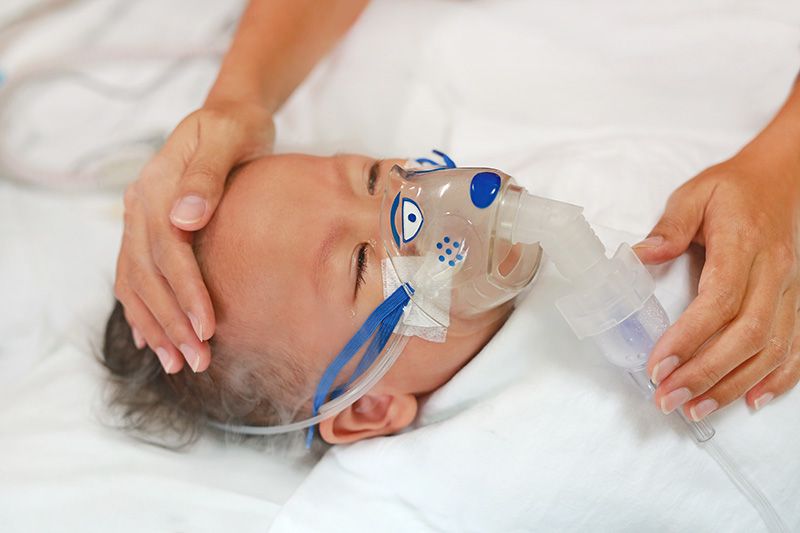Keep Our Young Children Safe from the Alarming Surge of Pediatric RSV
A new study estimates that 1 in 50 deaths of otherwise healthy children under age 5 around the world is due to a common virus that’s currently surging in the U.S.: Respiratory Syncytial Virus or RSV. Pediatric intensive care units around the U.S. are overflowing or at capacity with children experiencing RSV.

At an Ethnic Media Services briefing, Nov. 18, speakers – Dr Manisha Newaskar, Clinical Assistant Professor, Pediatrics – Pulmonary Medicine, Stanford Medicine Children’s Health; Dr Priya Soni, Pediatric Infectious Disease Specialist, Cedars – Sinai Medical Center; and Dr Mina Hakim, Pediatrics Specialist, South Central Family Health Center, Los Angeles – discussed the causes related to the surge of cases; how parents can distinguish between RSV, a cold, and COVID-19 in their young children; preventive measures, especially vaccines and boosters, and therapeutics and treatment.
“At this point what we are seeing is a surge in cases in pediatric patients who have RSV, and other viral illnesses. We are seeing a lot of emergency room visits and hospitalizations,” said Dr Newaskar.
“We may not be seeing the worst of it just yet. Things lag on the West Coast and so we’re buckling up for what may be a very busy winter,” said Dr Soni.
“It is an alarming trend, with increase in respiratory illnesses, and viruses, and young children. The trend is not very unusual itself as the number of patients.
“What’s unusual is the timing of it. It’s only November, and we’re seeing an uptick, where we would see in January, or December, January and February, where the spike usually happens,” said Dr Hakim.
“RSV stands for Respiratory Syncytial Virus. It is a very common winter virus that been around for decades, and we have a predictable seasonality to it. But what we’re seeing now is that the spike in cases have surpassed many other types of respiratory viruses though we are seeing a little bit of everything.
“Thinking about where we are in this stage of the pandemic, children are going back to school unmasked and they’re mingling with each other and many of these children have not lived through a normal winter respiratory viral season so they may not have formed immunity to many of these viruses that they’re seeing for the first time.
“There could be these symptoms – cough, runny nose, fever, or sore throat. However, some important distinctions between RSV and flu, or RSV, COVID, and flu, is that with flu the symptom onset is very quick, and you may have some other systemic findings including body aches, fatigue, high fever, and headache.
“In a young baby that’s very hard to differentiate. Any child or infant, specifically less than six months of age with cough, congestion, fever, we need to keep an eye out on the progression of that baby symptoms because these viruses can be particularly complex and devastating in that age group.
“With RSVs focusing on our young babies this winter, virus typically happens in stages and you’ll see maybe some subtle findings at first with the baby may not be eating as well; maybe having some coughing or sneezing, runny nose; there may or may not be fever with RSV in babies this young, but they may progress over the next few days to have respiratory distress and difficulty breathing, and poor feeding.
“It’s always important to really make sure to have a good line of communication especially open with your pediatrician and primary care provider for your children during this time to make sure they can be seen if needed for further evaluation.
“Parents can prepare by getting nasal suctioning devices that can help clear secretions and small babies who may need help. They could get a humidifier, which is very helpful during respiratory season. The dry air in California allows these viruses to spread and multiply more, and keeping the air nice and moist is very helpful.
“The second thing would be to communicate with your pediatrician, let them know if your child’s not feeling well. They will provide support and they know your child the best.
“The last is protect, get your flu vaccine if you haven’t, and have your child get the flu vaccine if they’re six months and above. There hasn’t been a more important time to get your flu vaccine and to get your COVID booster,” said Dr Soni.
“Sometimes it’s basics like just using bulb suction to suction the nose that can help the baby breathe so much better, and then fever control with things like acetaminophen. Tylenol can be helpful.
“The most important thing is to also make sure that the baby is hydrated well because when the baby is not feeling well, they don’t like to feed, so there may be decreased appetite because they’re breathing hard. It can lead to decreased oral intake and they often get dehydrated very easily.
“Many babies, when they present to emergency room, they are very dehydrated and a lot of times we put them on intravenous fluids and as RSV causes bronchiolitis or swelling of the breathing tubes, it can result in low oxygen levels. Many babies will end up in the hospital on oxygen support.
“Usually, things like steroids or breathing treatments are not helpful treatments.
“Unfortunately, there are no antibiotics or antiviral that would be helpful so mostly the treatment is supportive therapy meaning, making sure that we suction the passages; we give them oxygen if they need; we give them IV fluids to keep them well hydrated; and we just give them respiratory support in the hospital; and the disease runs its course and it slowly gets better,” said Dr Newaskar.
“RSV spread mostly through contact and droplets, by person to person contact with their secretions so there are some data that says that RSV can survive up to 30 minutes or more on unwashed hands and it can survive on surfaces up to six hours.
“It’s important that you’re washing your hands thoroughly; avoiding crowded places; wearing masks, especially if you are having some respiratory symptoms like coming down with a cold.
“It’s a good idea to keep your child home if they are feeling sick because that’s how you can prevent spread of viruses inside daycare or school. Taking that precaution is important.
“There is one more precautionary measure that we can take – a vaccine, Synagis, given to high-risk infants. It can prevent severe RSV disease. The high-risk infants basically are infants who are born very premature. These are monthly injections that are given during a typical RSV season, starting October through March every year.
“It doesn’t prevent the baby from getting RSV but it will prevent them from getting severe illness, so they don’t end up in the hospital,” said Dr Newaskar.


